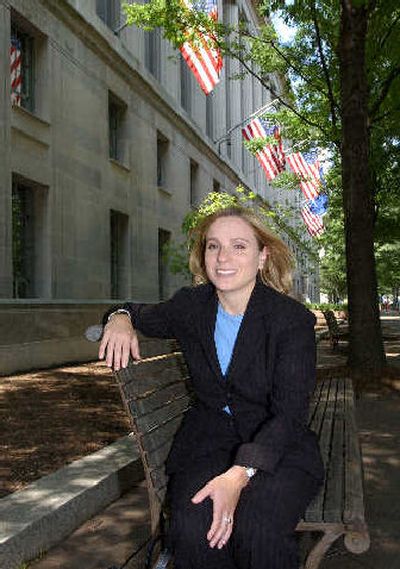Atlanta’s stars find new careers

ATLANTA – Kerri Strug was the courageous gymnast with the golden vault. Michael Johnson was the record-breaking sprinter with the golden shoes.
Ten years ago, they were among the most celebrated U.S. athletes of the Atlanta Olympics, their glory captured on magazine covers, Wheaties boxes and newscasts.
Much can change in a decade.
Strug now works for the Department of Justice in Washington. Johnson is opening a world-class training center near Dallas, designed for kids just learning to compete and professionals seeking an edge.
Each has moved on, but it’s a different lifestyle than the routine of an elite Olympic athlete. Strug said she realizes she never again will experience the individual glory she enjoyed in 1996 in Atlanta.
“Like it or not, and I like it, that’s the highlight of my life,” Strug said of her dramatic role in helping the U.S. beat Russia for the gold medal in the team gymnastics competition in Atlanta.
Strug’s final vault assured the win, but only after she fell on her first attempt, injuring her ankle. The drama rose as she limped back for her final try.
Strug stuck the landing, despite having two torn ligaments in her ankle. Then, after raising her arms in victory as fans in the Georgia Dome cheered, the 4-foot-8 Strug collapsed to the floor and was carried away by her coach, Bela Karolyi.
Following the Atlanta Olympics, she was featured on the covers of People and Time magazines. She visited President Clinton with her teammates, and she made the TV talk-show circuit.
Then it was time to plan the rest of her life.
Strug began the transition by competing as a professional gymnast for two years before enrolling at UCLA.
“I’m not going to say I didn’t have a lot of hard times in college wondering ‘What now?’ ” she said. “That’s why I transferred from UCLA to Stanford. I wanted to put all my focus on my education.”
Strug worked in San Francisco as an elementary school teacher before moving to Washington. Last year, she joined the Justice Department’s Office of Juvenile Justice and Delinquency Prevention staff. Through that office, she speaks to youth groups, helps arrange mentorships and does other work with at-risk youth.
The vault from teaching to the Justice Department surprised even Strug.
“It’s important to serve something larger than myself,” she said. “For so long I was focused on myself. I think everybody here is passionate about making a difference and helping as many children as we can.”
Johnson’s time in the spotlight covered the full decade of the 1990s. He was at the top of his sport in 1990 and 1991, but food poisoning limited him to one gold medal in 1992 on the 400-meter relay team.
Nothing would stop Johnson from obtaining unprecedented double gold in the 200 and 400 in Atlanta, setting a world record with a time of 19.32 seconds in the 200 and an Olympic record in the 400 at 43.49.
Johnson’s unorthodox upright running style in his famous gold Nike shoes made his records appear almost effortless. He added two more gold medals in the 2000 Olympics, but Atlanta was the highlight.
“The focus was becoming the first man to win 200 and 400 meters,” he said in a telephone interview from his home near San Francisco. “That was the goal. The 19.32 was obviously a very huge bonus. That was one of the best races I’ve ever run in my life.”
Johnson, 38, was inducted into the USA Track Hall of Fame in 2004, and he is regarded as the top 200/400 sprinter in history. Perhaps his most impressive accomplishment was his career record of 19 gold medals – with no silver or bronze – in international competitions, including the Olympics, Goodwill Games and World Championships.
Johnson is not ready to fade into the background. He plans to open a new training center next spring near Dallas, where he was born, for kids, adults and professional athletes in track, baseball, football and other sports.
“I really felt like I did everything I could possibly do in my career,” Johnson said. “It’s a great feeling. I want to help these other professional athletes to do that too, to experience a much more successful career and happiness with their career.”